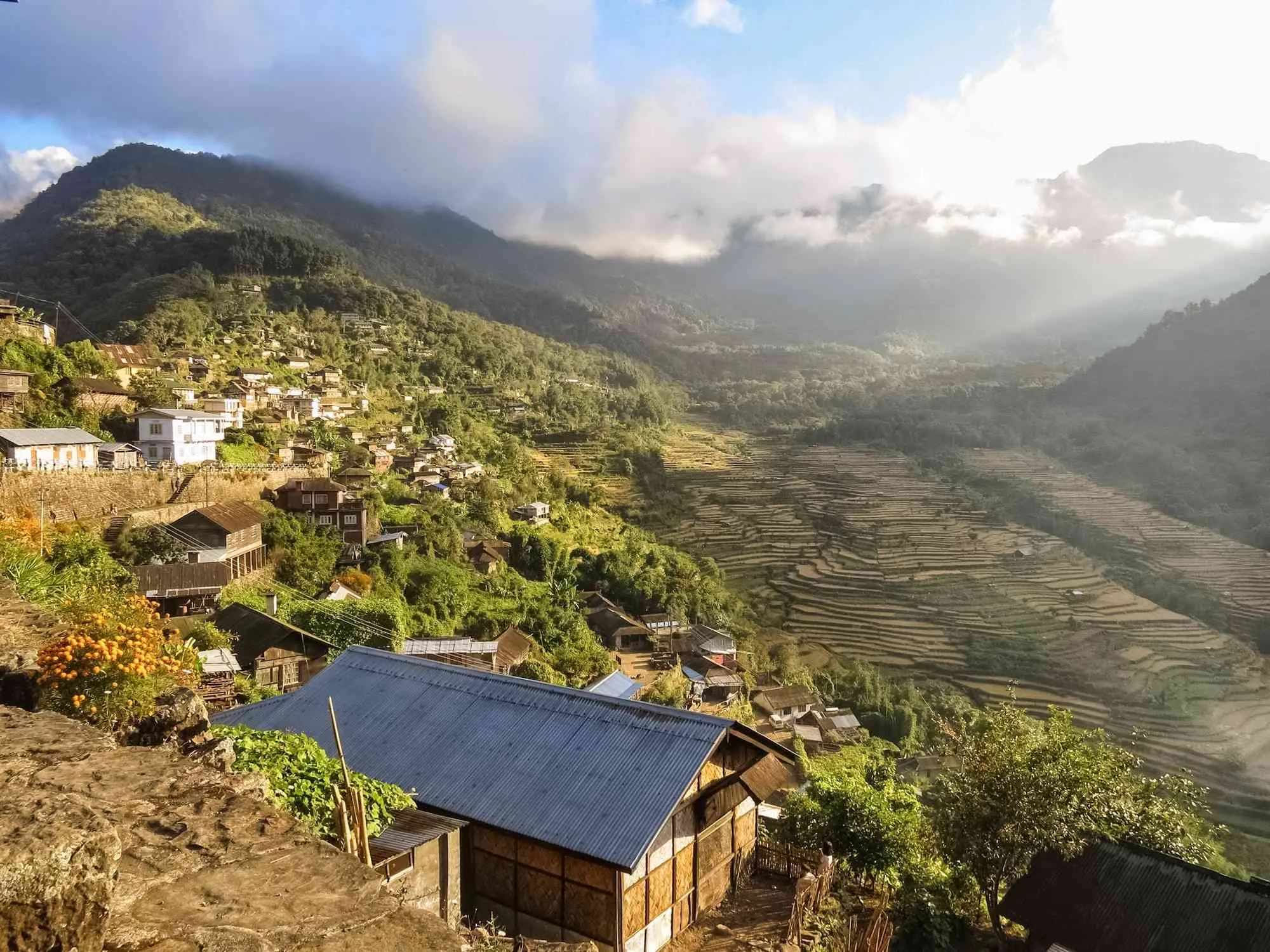
Khonoma: The Green Village of Nagaland
There is a place called Khonoma, known as the 'Green Village', with its diverse history and culture which are in strong contrast to one another making it a standout destination in Nagaland tourism. Located 20 kilometres away from Kohima, this village of the Angami tribe is one among which stands firm in a sustainable path with strongest conservation. The place is also known for its efforts in the field of eco-tourism and environmental conservation, which has placed Khonoma on most Nagaland holiday packages as well.
The village has a storied past, particularly during the Anglo-Naga wars, where it served as a significant stronghold. The remnants of ancient forts and the stories passed down through generations offer a fascinating glimpse into the region's history. Visitors on Nagaland tours can explore these historical sites and learn about the village’s resilient spirit.
Khonoma is culturally rich. The village still identifies itself as a whole along with the customs and tradition followed by people from Angami tribe. This historical village houses the traditional Naga architecture, as well as indigenous crafts and festivals that make it a go-to destination for those who desire an immersive cultural experience. The village has scenic beauty of cascading terraced fields and dense forest rich in flora and fauna. The villagers have set up the Khonoma Nature Conservation and Tragopan Sanctuary which is a testimony of their dedication to protect nature and offers some great opportunities for birdwatching, hiking etc.
Highlights
> Eco-Friendly Practices: Khonoma and Nagaland ar known for its sustainable way of living, breathing the air with a tinge of conservation is always refreshing.
> Rich History: It was the village that bore a major impact of Anglo-Naga wars, which makes it one of those historical sites for Nagaland tours.
> Cultural Heritage: The traditional Naga cultural and customs, Angami village.
> Scenic Landscape: Perched in a setting among the terraced fields and dense forests, it tops other scenic destinations mentioned on our Nagaland packages.
> Wildlife Sanctuary: Khonoma Nature Conservation and Tragopan Sanctuary is a haven for birdwatchers and nature enthusiasts.
Best Time to Visit
Khonoma is best experienced between October and May. The weather during these months remains perfect, and exploring the village along with its surroundings becomes very comfortable. With the winter months approaching, November to February provides a cooler climate that is more fitting for trekking than hot summer days while spring (March to May) will see estates adorned with blooming flowers and rich greenery. Monsoon season (June – September): Monsoons are best to be avoided since the heavy rains can make it difficult for both traveling and outdoor activities.
Speciality
The trademark of Khonoma is eco-friendly methods and cultural richness. Community Wide Conservation Eco Village Ingredients are at the core of environmentally friendly innovation, and this village is doing it right. The Khonoma Nature Conservation and Tragopan Sanctuary is a good example to name, where Blyth's tragopan, an endangered pheasant species along with other flora and fauna are protected. The village is also of historical importance and its tradition that dates back several reads, adds to the value for tourists and has filtered through Nagaland tourism with time as an attraction in itself.
Nearby Attractions
> Kohima War Cemetery: One of the historical places to visit in Nagaland it is built and maintained by common wealth war grave commission, all who died during battle were buried here which has grassy land with white raised markings for around 1400 individuals.
> Dzükou Valley: Known for its mesmerizing scenery and trekking trails, Dzükou valley is one of the must-include places in several Dzukou Valley Trekking Packages.
> Jakhama Village: Home to a typical Naga way of life, as well crafted items this is good for cultural excursions.
> Puliebadze Peak: Famous amongst the trekkers for its panoramic view of Kohima and surrounding areas.
> Kisama Heritage Village: Offers the annual hornbill Festival where you witness Naga culture and heritage.
Places to Stay
> Khonoma Homestays: Immerse yourself in local hospitality with homely stay experiences that offer a taste of the Angami way of life.
> The Heritage: A cozy guesthouse in Kohima that allows you to explore Khonoma and other attractions.
> Hotel Japfü: Modern amenities and a handy base for visiting Kohima as it is located in Kohima itself.
> Camp David: A boutique resort near Khonoma, known for its serene environment and excellent service.
> Razhu Pru: House of heritage in Kohima where tradition mingles with modern comfort.
How to Reach
The nearest airport is at Dimapur and has direct connection with cities like Kolkata, Guwahati Delhi etc. The airport is connected by taxis and buses You can hire a taxi or take any bus for 74 kms to Kohima Khonoma is only a 20-kilometer drive away from Kohima and you can easily get shared taxi for this. The closest railway station is in Dimapur, if you are travelling by train around the area. Thereafter you can take a taxi/cab or bus up to Kohima and further to Khonoma. The roads are great and there is no hassle in reaching this beautiful hill station.
Activities to Do
> Village Walks: take a walk across the village, and get to know about its history, culture as well as sustainable practices.
> Birdwatching: Go watch birds at Khonoma Nature Conservation and Tragopan Sanctuary on weekends in a bid to catch sight of various avian species.
> Trekking: Take on beautiful treks through lush green terraced farms and thick woods making it a trekker's paradise.
> Culture Tours: Engage in Angami culture and traditions, Join local festivals & celebrations.
> Photography: Capture the breathtaking landscapes with a colourful and vibrant yet simple society in Khonoma.
Precautions to Take
> Wear Comfortable Clothing: Layering with options for varied temperatures and the correct footwear to support village walks, or treks.
> Respect Local Customs: Obey local practices and cultures, especially when it comes to religious or cultural sites.
> Carry water: drink water if you are doing some procedure outside in this heat.
> Follow Guidelines: Stick to all park rules and follow advice from guides or your host so that you can enjoy a safe respectful visit.
> Carry Essentials: Remember to pack sunscreens, hats and insect repellents for your protection from the elements and those insects unnecessary.






























